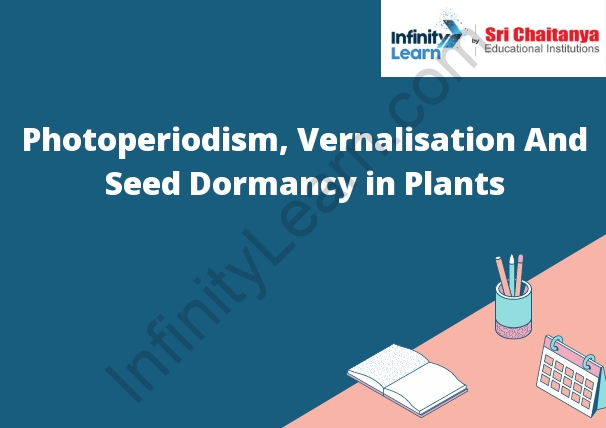Table of Contents
Photoperiodism in Plants-
The regular, repeated change in the length of daylight hours is called the photoperiod. The photoperiodism in plants is the response of plants to the photoperiod.
The photoperiodism in plants is the response of plants to the photoperiod. Plants can detect the length of the day through the leaves. The leaves have specialized cells that can sense the length of the day.
The response of plants to the photoperiod is the ability to change their growth and development in response to the length of the day. Plants can change their growth and development in response to the length of the day by changing the amount of time they spend growing.
Plants can also change the amount of time they spend flowering in response to the length of the day. The photoperiodism in plants is used to control when plants flower.

Photoperiodism Definition
Photoperiodism is the biological response of an organism to the length of day or night. Photoperiodism is determined by the natural or artificial light cycles.
Importance of Photoperiodism in Plants
Plants use photoperiodism to sense the length of the day. They use this information to determine when to flower. Short day plants flower when the day length is less than 12 hours. Long day plants flower when the day length is more than 12 hours.
Vernalization Process
The vernalization process is the process of treating a seed so that it will germinate in the spring. This is usually done by exposing the seed to cold weather for a period of time.
Importance of Vernalization
The process of vernalization is important for the germination and growth of plants. It involves the exposure of plants to cold weather conditions for a period of time. This process helps to induce the production of certain hormones in the plants that are necessary for their growth. Vernalization is especially important for plants that are grown in colder climates, as it helps them to adapt to the colder weather conditions.
Seed Dormancy Definition
Seed dormancy refers to the natural ability of a seed to remain inactive and non-viable for a period of time. The length of dormancy can vary from a few days to several years, and is often determined by the environmental conditions present during the seed’s development. Once the seed has reached a state of dormancy, it will not germinate until the correct conditions are present.
Types of Seed Dormancy
There are three types of seed dormancy: physiological, morphological, and environmental.
Physiological dormancy is caused by a lack of water or nutrients in the seed. The seed will not germinate until it has been exposed to water or nutrients. Morphological dormancy is caused by a physical barrier in the seed that prevents germination. Environmental dormancy is caused by the environment in which the seed is located. The seed will not germinate until the environment becomes favorable.
Innate Dormancy
Innate dormancy is a term used in botany to describe a plant’s natural ability to go into a dormant state.
Many plants have the ability to enter into a dormant state, which helps them to survive in adverse conditions. During dormancy, the plant’s metabolic activity slows down and it becomes less active. This helps to conserve energy and resources, and can also help the plant to avoid being damaged by harsh weather conditions.
Some plants enter into a dormant state naturally, while others may need to be induced into dormancy. This can be done by exposing the plant to cold temperatures or by withholding water.
Enforced Dormancy
This policy is designed to ensure that the server infrastructure is not overloaded and that all customers have access to the server. If a server is inactive for a period of time, it may be placed into a dormant state. In a dormant state, the server will not be accessible and no customer data will be stored on the server.
Induced Dormancy
A seed that is dormant is not actively growing, but it is not dead. The seed can be awakened and resume growth under the right conditions.
Some seeds enter into a dormant state naturally as a part of their life cycle. Other seeds can be induced to enter into a dormant state by withholding water, lowering the temperature, or exposing the seed to certain chemicals.
Dormancy is a survival strategy for seeds. It allows them to wait out unfavorable conditions and then resume growth when conditions improve.
Causes of Seed Dormancy
There are many causes of seed dormancy, but the most common are environmental conditions. Most seeds will not germinate until the correct conditions are met, such as the right temperature and moisture level. Other causes of seed dormancy include:
-The seed coat: Some seeds have a hard seed coat that needs to be broken down before the seed can germinate.
-The embryo: Some seeds have an embryo that is not ready to germinate yet.
-The endosperm: Some seeds have a layer of endosperm that needs to be eaten away before the embryo can germinate.









